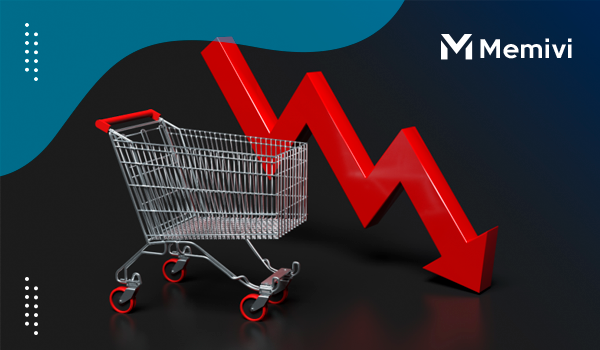
The Impact of Global Economic Slowdown on the US Economy in 2025 is a critical topic for understanding future economic challenges. As the global economy slows, the US faces significant hurdles. With changing dynamics in international trade, financial markets, and domestic industries, it’s crucial to grasp the reasons behind this slowdown and how it impacts various sectors. Learn about potential government responses and explore strategic predictions for the future as we navigate these uncertain times.
Reasons behind Global Economic Slowdown
- The global economic slowdown is influenced by several key reasons that have a direct impact on the US economy. One major factor is trade tensions, where conflicts between major economies, such as the US and China, create uncertainty in the market. This uncertainty leads to decreased investment and slows economic growth.
- Political instability globally can also contribute to economic slowdowns. When countries face political turmoil, it disrupts international trade and investment, affecting economic stability on a larger scale.
- Another crucial aspect is rising debt levels. Many countries have accumulated significant debt, limiting their ability to invest in growth-promoting activities. This situation can create ripples in the global economy, influencing the US in return.
- Demographic shifts also play a role in the economic slowdown. Aging populations in developed countries mean a slower workforce growth, leading to reduced productivity and economic output. As a result, demand for goods and services decreases, impacting the overall economy.
- Finally, environmental factors, including climate change and natural disasters, pose serious threats to global economic stability. These events can disrupt supply chains, damage infrastructure, and lead to financial losses, all contributing to a slowdown.
- The interconnected nature of global economies means these factors not only affect individual countries but create a ripple effect worldwide, influencing the US economy significantly.
Key Sectors Affected in the US

The global economic slowdown is impacting several crucial sectors within the US economy. A significant sector feeling this pinch is the manufacturing industry. Many manufacturers are experiencing reduced demand for exports, leading to slower production rates and, in some cases, layoffs. Consumer goods are also affected as purchasing power declines, causing retailers to reassess inventory and staffing to adapt to changing consumer behavior.
Another critically impacted area is the technology sector. As businesses cut costs, investments in new technology and infrastructure projects often get postponed. This slowdown is hitting tech companies that rely heavily on corporate clients. The automotive industry is facing its challenges, with reduced sales both domestically and internationally, impacting supply chains and workforce stability.
Real estate and construction are not left unscathed, with fewer new projects launching due to financing difficulties and lower investor confidence. The slowdown also affects the financial sector, as banks and financial institutions must navigate tighter credit markets and increased risk management measures.
Lastly, the agriculture sector is experiencing fluctuations due to changing trade policies and international markets. Farmers are particularly vulnerable to these changes, facing challenges from export restrictions and varying commodity prices.
Government Responses and Policies
Governments around the world have implemented various responses to address the challenges posed by the global economic slowdown. In the United States, these measures focus on stabilizing the economy and supporting vulnerable sectors. Key strategies include fiscal stimulus and monetary policy adjustments, both crucial in mitigating negative impacts.
The federal government has introduced stimulus packages aimed at boosting consumer spending and providing liquidity to businesses. These packages often involve direct financial assistance to households and subsidies for industries severely hit by the downturn.
Moreover, monetary policy plays a vital role. The Federal Reserve frequently adjusts interest rates to manage economic stability. During an economic slowdown, lowering interest rates encourages borrowing and investment, which can help stimulate growth.
In addition to these economic policies, there is a strong focus on workforce protection. This includes extended unemployment benefits and job retraining programs to help workers transition into emerging industries. Government-funded initiatives are crucial to maintain employment levels and reduce the economic disparity.
Successful policy implementation involves coordination between federal and state governments. Local governments tailor their responses based on specific regional needs, ensuring that resources reach those most affected by the slowdown.
Future Predictions and Strategies
As we look ahead, it is crucial to analyze potential future outcomes and devise effective strategies to mitigate the impact of global economic slowdown on the US economy. Experts predict a range of possibilities, considering both optimistic and pessimistic scenarios.
Potential Recovery Signals: In an optimistic scenario, the US could witness gradual recovery signs. Strengthening consumer confidence and global economic partnerships might play pivotal roles. Encouraging investments in technology and infrastructure would spur growth, counteracting the effects of the slowdown.
Adaptation and Innovation: Businesses must adapt and innovate continuously. Emphasizing digital transformation and embracing new technologies could provide an edge in navigating these uncertain times. Additionally, companies should focus on upskilling their workforce to align with evolving market demands.
Strategic Policy Implementation: Government’s role in crafting strategic policies can’t be overlooked. Effective fiscal stimulus packages and targeted support for key sectors like manufacturing and agriculture could stabilize the economy. Moreover, maintaining open channels for international trade will be vital to sustain economic momentum.
Long-term Planning: Long-term planning should involve sustainable practices. Encouraging green initiatives and energy-efficient technologies can create new job opportunities while ensuring environmental stability.


 The 5 Financial Habits That Will Make You a Better Investor <p class='sec-title' style='line-height: normal; font-weight: normal;font-size: 16px !important; text-align: left;margin-top: 8px;margin-bottom: 0px !important;'> Discover how to transform your financial future by adopting The 5 Financial Habits everyone needs </p>
The 5 Financial Habits That Will Make You a Better Investor <p class='sec-title' style='line-height: normal; font-weight: normal;font-size: 16px !important; text-align: left;margin-top: 8px;margin-bottom: 0px !important;'> Discover how to transform your financial future by adopting The 5 Financial Habits everyone needs </p>  Get Paid to Shop: The Best Cash Back Apps for Everyday Purchases <p class='sec-title' style='line-height: normal; font-weight: normal;font-size: 16px !important; text-align: left;margin-top: 8px;margin-bottom: 0px !important;'> With various platforms and opportunities, you can enjoy your favorite pastime and earn money at the same time </p>
Get Paid to Shop: The Best Cash Back Apps for Everyday Purchases <p class='sec-title' style='line-height: normal; font-weight: normal;font-size: 16px !important; text-align: left;margin-top: 8px;margin-bottom: 0px !important;'> With various platforms and opportunities, you can enjoy your favorite pastime and earn money at the same time </p>  Unlocking Your Bank’s Mobile App: 10 Features You Should Be Using <p class='sec-title' style='line-height: normal; font-weight: normal;font-size: 16px !important; text-align: left;margin-top: 8px;margin-bottom: 0px !important;'> Unlocking your bank's mobile app can seem daunting, but understanding its features can greatly enhance your banking experience </p>
Unlocking Your Bank’s Mobile App: 10 Features You Should Be Using <p class='sec-title' style='line-height: normal; font-weight: normal;font-size: 16px !important; text-align: left;margin-top: 8px;margin-bottom: 0px !important;'> Unlocking your bank's mobile app can seem daunting, but understanding its features can greatly enhance your banking experience </p>